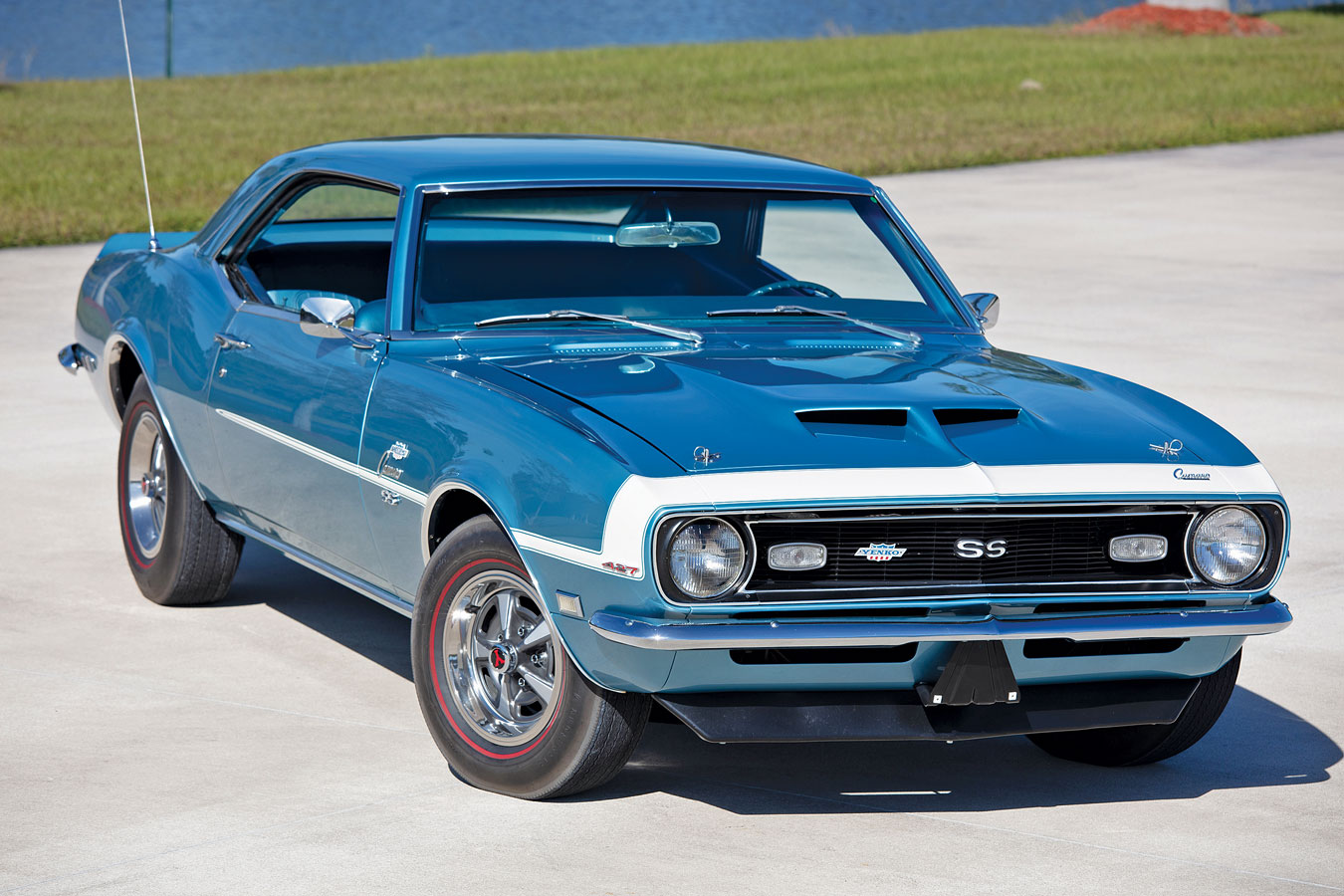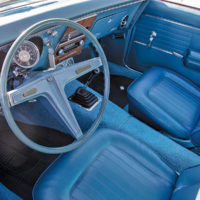SCM Analysis
Detailing
| Vehicle: | 1968 Chevrolet Yenko Super Camaro 427/450 |
| Years Produced: | 1967–69 |
| Number Produced: | 64 (1968) |
| SCM Valuation: | $465,000 |
| Tune Up Cost: | $500 |
| Chassis Number Location: | Stamped into instrument panel on driver’s side |
| Engine Number Location: | Stamped on pad on block in front of passenger’s side cylinder head |
| Club Info: | The Supercar Registry |
| Website: | http://www.yenko.net |
| Alternatives: | 1966–69 Chevrolet Corvair Yenko Stinger, 1967–70 Shelby GT500 Mustang, 1969 Chevrolet Camaro COPO |
| Investment Grade: | A |
This car, Lot 705.1, sold for $533,500, including buyer’s premium, at Barrett-Jackson’s Palm Beach, FL, auction on April 9, 2022.
Don Yenko was the SCCA B-Production National Champion in 1962 and 1963 and runner-up in ’64. By 1966, however, the Shelby GT350 Mustangs were crushing his Corvettes. In a contemporary magazine interview, Yenko said that after a season of looking at the rear bumper of Mark Donohue’s Mustang, he decided to build his own car.
“I got to thinking I’d like to be Shelby’s counterpart in Chevrolet,” Yenko told Greg Rager of Muscle Car Review magazine in 1987.
Developing a performance Chevy would be far different from Carroll Shelby’s program with Ford. Dearborn was spending millions on its “Total Performance” initiative, and Shelby had nearly limitless budgets. GM, on the other hand, had a strict ban on supporting auto racing and performance vehicles of any kind.
First, a Corvair
Don’s father owned Yenko Chevrolet in Canonsburg, PA, outside Pittsburgh. The dealership gave him the connections and resources to set about creating his car. During 1966–69, Yenko built about 185 “Yenko Stingers,” modified Corvairs that dominated SCCA D-Production racing. To create this “American Porsche,” he used a tool only a dealer would know about, the Central Office Purchase Order. This allowed Yenko to purchase the cars from Chevrolet with most of the performance options needed to create the Stinger.
When Chevrolet finally introduced its Mustang rival, the Camaro, in the fall of 1966, Yenko turned his attention to creating a vehicle that could challenge Shelby’s new-for-1967 GT500 Mustang. GM forbade putting Chevy’s big-block 427-cid engine in anything other than Corvettes or Impalas. So Yenko ordered V8-powered Camaros, then replaced the engines with the 450-hp L72 available in the 1966 Corvette. Building 54 “Super Camaros” in 1967 was an expensive and inefficient process, with many brand-new components being swapped with other new parts.
For 1968, Yenko bought 375-hp, 396-cid L78 Camaros for conversion and installed just the L72 427 short-blocks. This allowed his mechanics to reuse the original cylinder heads, intake and exhaust manifolds, and engine accessories. Mechanics were paid $140 per conversion. Suspension and brake upgrades came from another unique-to-Yenko COPO, 9737, better known as the “Sports Car Conversion” option. Special “Yenko” badges, 140-mph speedometer, a unique fiberglass hood, and wider Pontiac Rally II wheels finished the package.
More or less
Meanwhile, Shelby Mustangs were becoming “a little less Shelby and a little more Mustang,” as Car Life noted when it tested the new 1968 Shelby GT500 KR. The cars were no longer built by Shelby American in California, with Shelby himself less involved. Ford’s new 428 Cobra Jet engine used in the GT500 KR was no match for Chevy’s L72. Yenko’s Super Camaro was just that — super. With explosive power, upgraded suspension and brakes, and enough styling clues to separate the cars from lesser Camaros, the Yenkos had a definite air of exclusivity.
Yenko was still a minor player in the supercar game, with dealer records showing 64 Super Camaros created in 1968 (though some claim 70). By contrast, 4,658 Shelby Mustangs were built that year. For 1969, Chevrolet finally allowed 427-powered Camaros to be ordered on COPO. This permitted Yenko to boost production, creating 201 Super Camaros with less hassle and a full GM warranty.
Rare and scarce
Few ’68 Yenko Super Camaros were built, and far fewer survive — less than 20. So it’s not surprising they do not often change hands publicly. The SCM Platinum Auction Database shows just a handful of sales over the past 20 years. The Fathom Blue Yenko (YS8021) from the famous Les Quam Collection that Mecum sold for $660,000 in 2017 (SCM# 6854256) had been in numerous books and magazines going back to 1989 and had only a handful of owners. Mecum sold another Fathom Blue ’68, first in 2006 for $367,000 and again in 2017 for $434,500 (SCM# 6839455). Even in the robust muscle-car market, Yenko Super Camaros are as rare as Bigfoot sightings.
Our subject car, YS8013, first surfaced in 2003 at Barrett-Jackson, selling for a then-eye-opening $105,840. At the time we said, “Yenkos will be an increasingly important car in the collector-car marketplace for some time to come. Overpriced for now, but just wait.”
How prescient. Indeed, after 19 years, our subject car, having covered just 112 miles in that time, has quintupled in value. The latest edition of the SCM Pocket Price Guide shows the 1968 Yenko Super Camaro with a median value of $465,000. (A ’68 Shelby GT500 KR, by the way, has a median of just $165,000.)
While this sale represents a top-of-book price, given how infrequently such an opportunity presents itself, we might come to the same conclusion here that we did the last time this car sold: Just wait. ♦
(Introductory description courtesy of Barrett-Jackson.)



